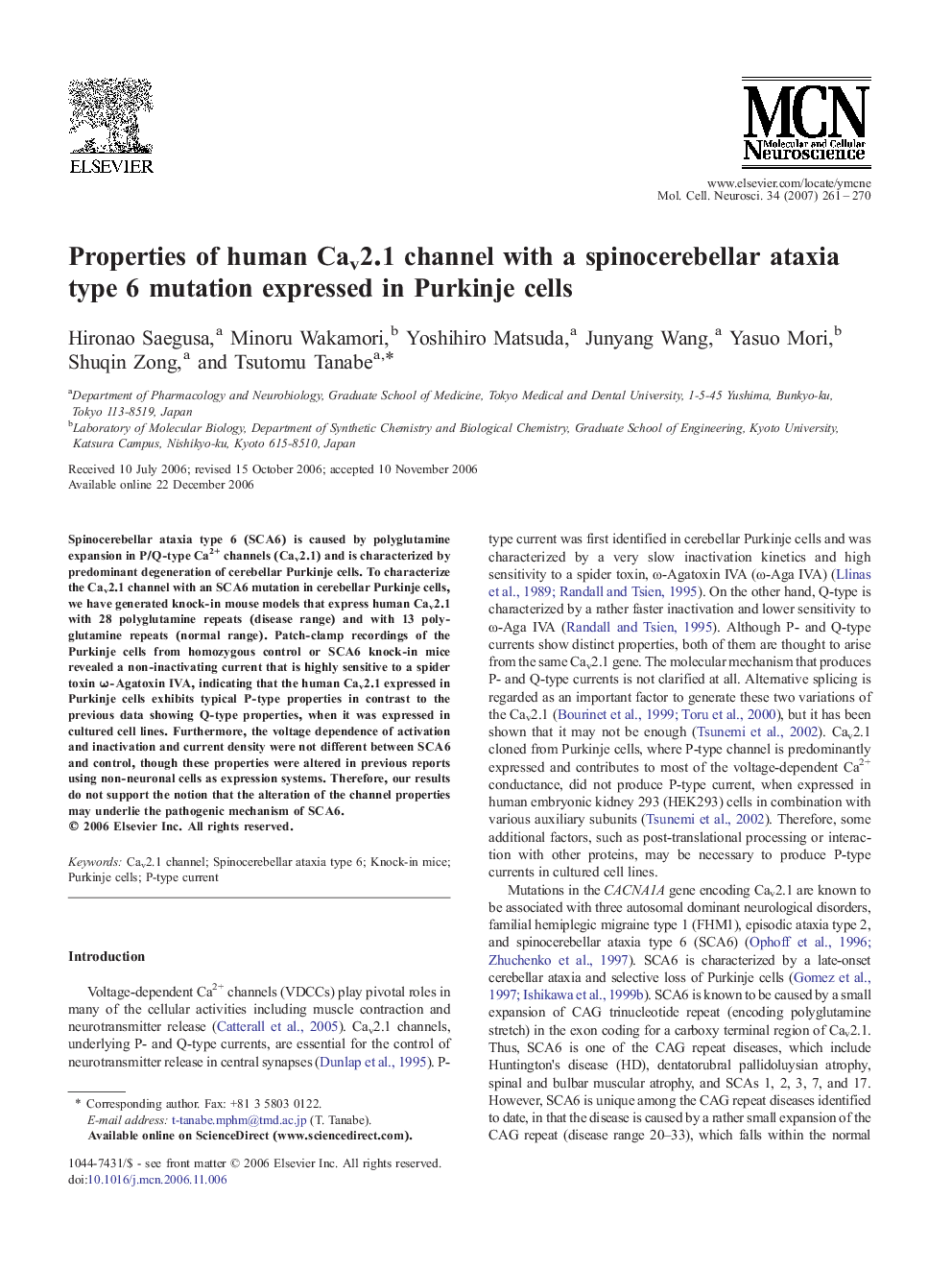| Article ID | Journal | Published Year | Pages | File Type |
|---|---|---|---|---|
| 2199315 | Molecular and Cellular Neuroscience | 2007 | 10 Pages |
Spinocerebellar ataxia type 6 (SCA6) is caused by polyglutamine expansion in P/Q-type Ca2+ channels (Cav2.1) and is characterized by predominant degeneration of cerebellar Purkinje cells. To characterize the Cav2.1 channel with an SCA6 mutation in cerebellar Purkinje cells, we have generated knock-in mouse models that express human Cav2.1 with 28 polyglutamine repeats (disease range) and with 13 polyglutamine repeats (normal range). Patch-clamp recordings of the Purkinje cells from homozygous control or SCA6 knock-in mice revealed a non-inactivating current that is highly sensitive to a spider toxin ω-Agatoxin IVA, indicating that the human Cav2.1 expressed in Purkinje cells exhibits typical P-type properties in contrast to the previous data showing Q-type properties, when it was expressed in cultured cell lines. Furthermore, the voltage dependence of activation and inactivation and current density were not different between SCA6 and control, though these properties were altered in previous reports using non-neuronal cells as expression systems. Therefore, our results do not support the notion that the alteration of the channel properties may underlie the pathogenic mechanism of SCA6.
